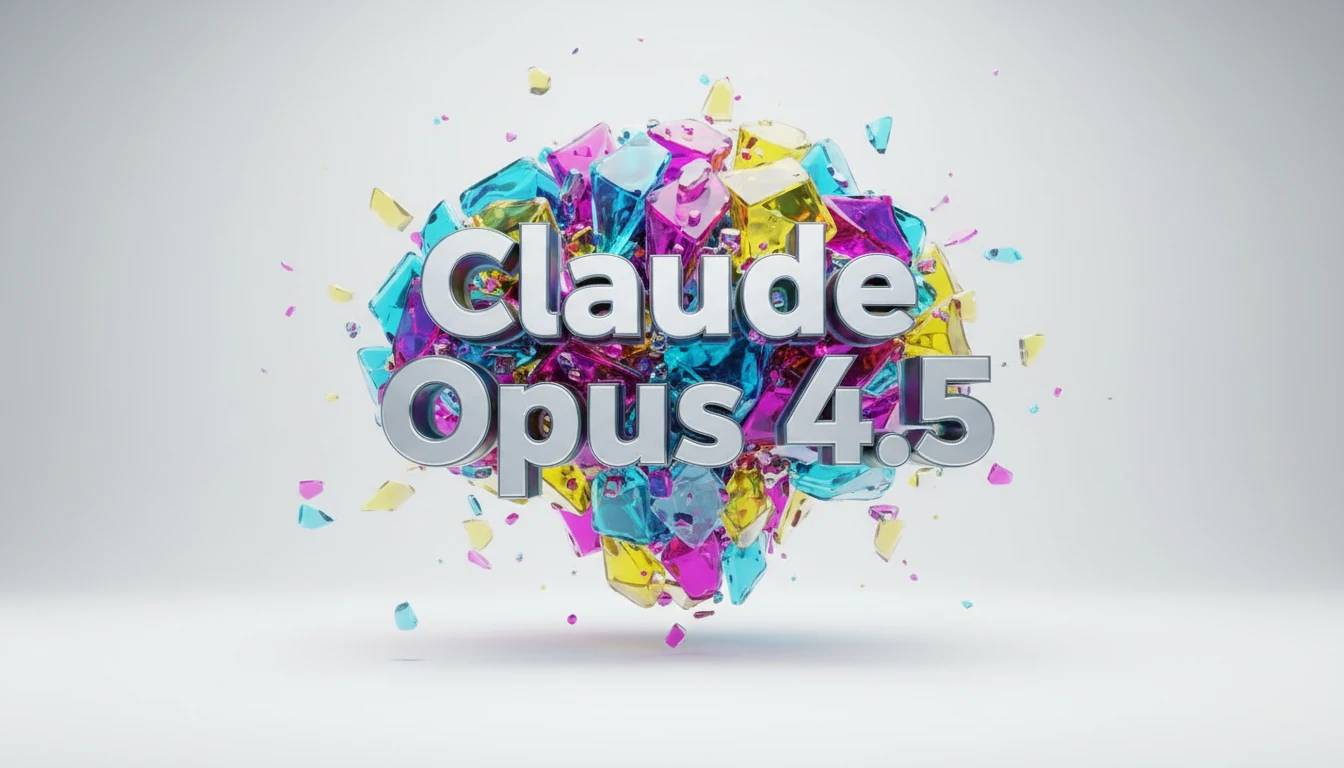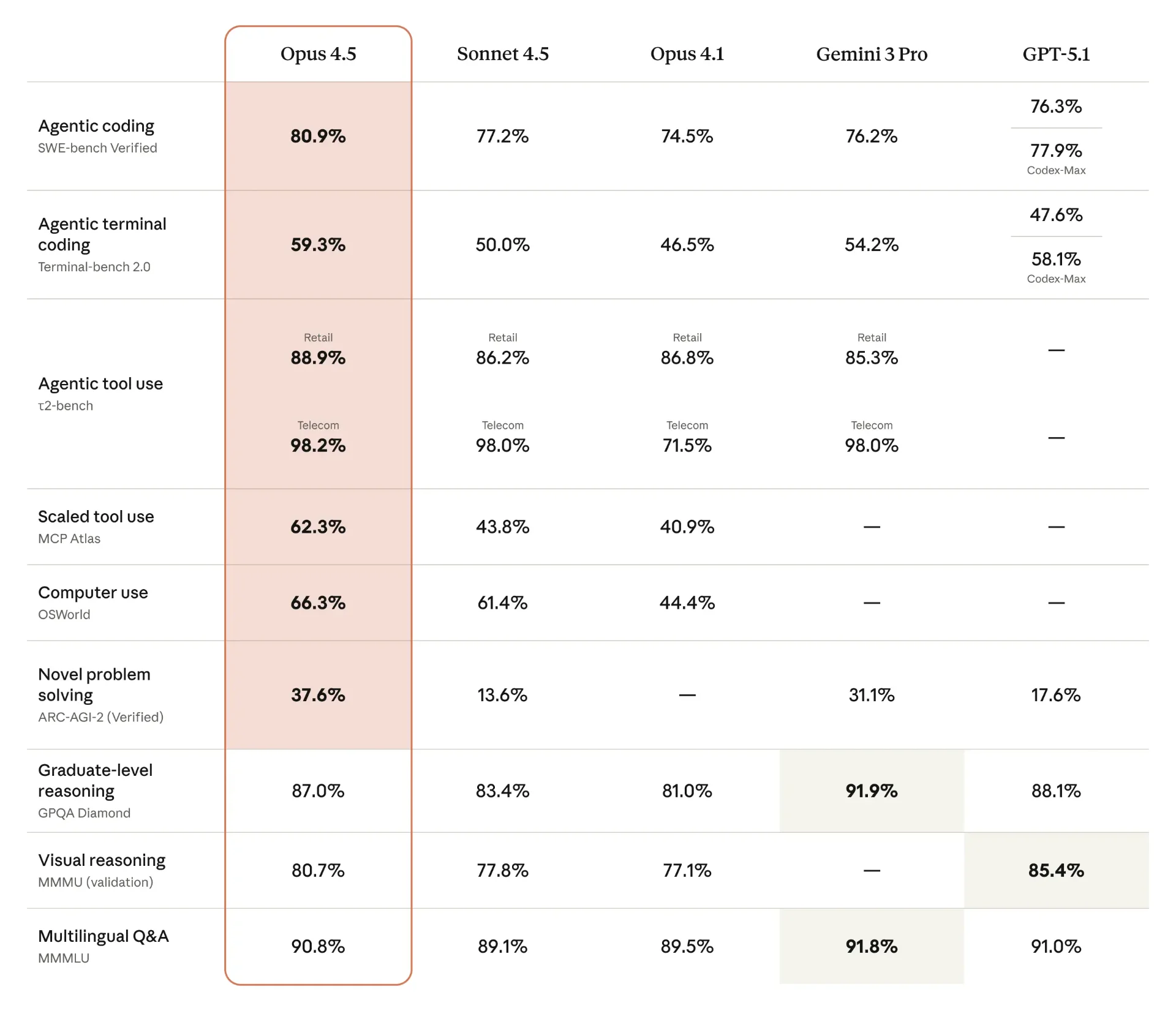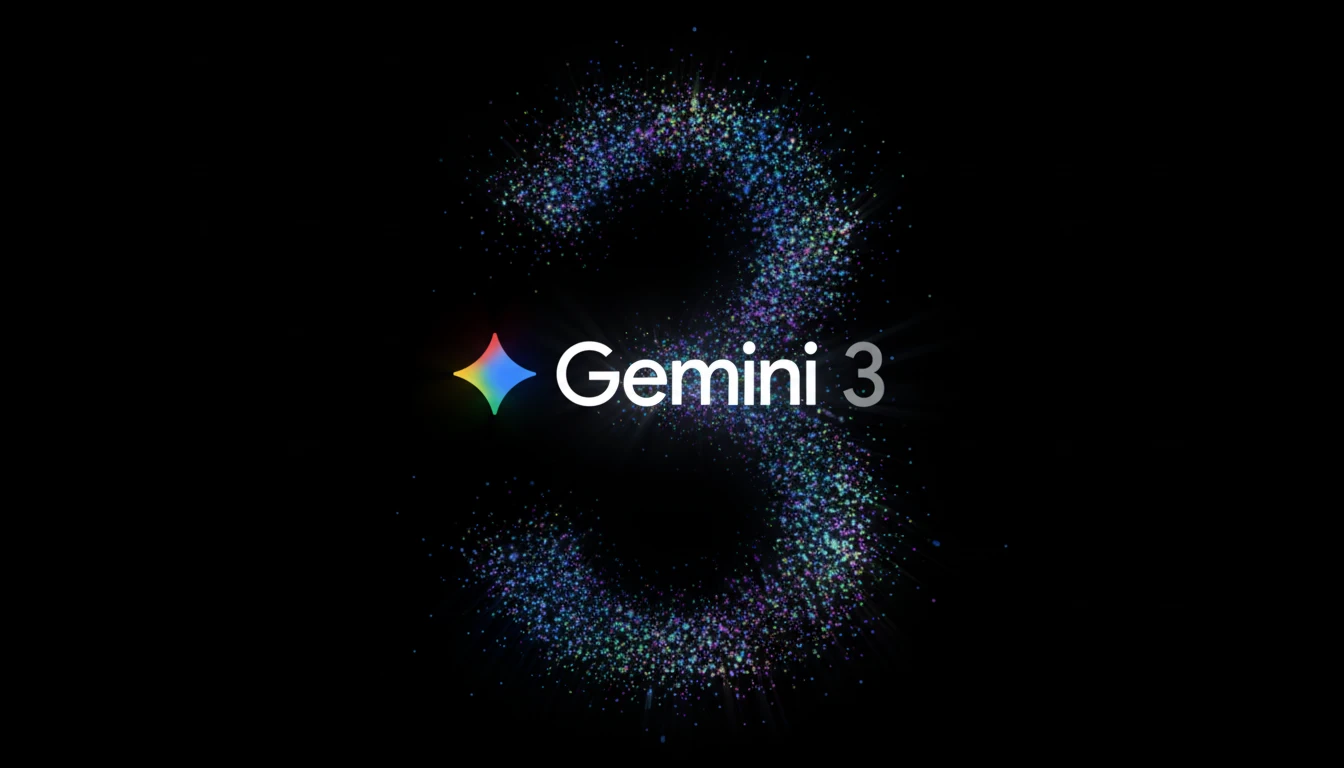
The world of artificial intelligence moves at a blistering pace, and just when you think you’ve seen the peak, a new summit appears on the horizon. Today, that new peak is Claude Opus 4.5. Anthropic has just unleashed its latest and most powerful model, making bold claims that it’s not just an incremental update but a significant leap forward in AI capability.
I’ve been following the development of large language models since the beginning, and the release of a new flagship model from a major player like Anthropic is always a landmark event. Billed as the “best model in the world for coding, agents, and computer use,” Claude Opus 4.5 promises to redefine what’s possible for developers, businesses, and everyday users.
In this comprehensive guide, we’ll dive deep into everything you need to know about Claude Opus 4.5. We’ll explore its groundbreaking features, benchmark its performance against its predecessors and rivals, break down the new, more accessible pricing, and show you exactly how to get started. Whether you’re a software engineer, a business analyst, or simply an AI enthusiast, this is your definitive resource for understanding the power and potential of Claude Opus 4.5.
What is Claude Opus 4.5? A Generational Leap Forward
Claude Opus 4.5 is the latest state-of-the-art large language model (LLM) from Anthropic, released on November 24, 2025. It serves as the new flagship model in the Claude family, succeeding previous versions and setting a new standard for intelligence, efficiency, and capability.
Anthropic positions Opus 4.5 not just as a better chatbot but as a powerful work engine. The company’s core claim is that it excels in three key areas:
- Coding: Generating, debugging, and understanding complex software.
- Agents: Performing multi-step, autonomous tasks using various tools and APIs.
- Computer Use: Intuitively interacting with software and digital environments to get work done.
Beyond these specialized domains, Anthropic also highlights that the model is “meaningfully better” at everyday knowledge work, such as conducting deep research, analyzing spreadsheets, and creating presentations. This suggests a dual focus: pushing the boundaries of advanced AI applications while simultaneously enhancing practical, day-to-day productivity.
The model was made immediately available upon announcement through Anthropic’s consumer apps (claude.ai), the Claude API, and major cloud platforms like Google Cloud and Amazon Bedrock, ensuring broad access from day one.
Core Features and Technical Specifications: Under the Hood
To truly appreciate what makes Claude Opus 4.5 a powerhouse, we need to look at its specific capabilities and technical specifications. These features combine to create a model that is not only more intelligent but also more practical and versatile.
Claude Opus 4.5 Coding and Engineering Prowess
This is perhaps the headline feature of Opus 4.5. Anthropic has made a direct claim to the throne of coding AIs. The evidence they provide is compelling: Claude Opus 4.5 achieves state-of-the-art results on the SWE-bench (Software Engineering Benchmark).
This isn’t just about writing simple Python scripts. SWE-bench tests a model’s ability to resolve real-world GitHub issues from open-source projects like Django and scikit-learn. Scoring highest on this benchmark means Opus 4.5 possesses a deep, practical understanding of complex codebases, library dependencies, and the logic required to fix genuine bugs.
For developers, this translates to:
- Smarter Code Generation: Writing more complex and context-aware functions, classes, and entire applications.
- Advanced Debugging: Identifying the root cause of tricky bugs and proposing accurate fixes.
- Efficient Refactoring: Intelligently restructuring and optimizing existing code for better performance and readability.
This is further enhanced by updates to Claude Code, Anthropic’s dedicated coding product, which now leverages the new model’s power for a more integrated and powerful development experience.
Advanced Agentic Capabilities
The term “AI agent” refers to an AI system that can autonomously plan and execute a series of tasks to achieve a goal. With Claude Opus 4.5, Anthropic is pushing agentic capabilities into the mainstream. The model is designed to be the “brain” of complex workflows, capable of:
- Tool Use: Interacting with external APIs, databases, and software tools.
- Long-Running Tasks: Executing processes that take minutes or even hours, such as comprehensive market analysis or large-scale data processing.
- Computer Interaction: Using desktop environments, browsers, and applications like Excel to complete tasks, much like a human would.
This represents a shift from a conversational AI to a functional, “doer” AI. Imagine an agent that can read a request in an email, pull relevant data from a CRM, analyze it in a spreadsheet, generate a summary slide deck, and draft a reply—all with minimal human intervention. That is the future Opus 4.5 is built for.
Context Window and Output Limits
A model’s context window is crucial as it dictates how much information it can “remember” and process at once. Claude Opus 4.5 maintains the family’s impressive technical specifications:
- 200,000 Token Context Window: This is equivalent to roughly 150,000 words or over 500 pages of text. You can feed the model entire novels, massive code repositories, or extensive financial reports for a comprehensive, in-context analysis.
- 64,000 Token Output Limit: The model can generate incredibly long and detailed responses, essential for tasks like writing complete technical manuals, drafting lengthy legal documents, or generating entire software modules in a single pass.
These generous limits are critical for professional use cases, eliminating the need to chunk large documents and lose valuable context in the process.
Knowledge Cutoff
Like all LLMs, Claude Opus 4.5 was trained on a dataset that ends at a specific point in time. Its “reliable knowledge cutoff” is March 2025. This means it is unaware of events, data, or developments that occurred after this date. While this is a limitation, its ability to browse the web (in some applications) and process user-provided documents allows it to work with up-to-the-minute information.
How Does Claude Opus 4.5 Compare to Its Predecessors and Competitors?
The release of Opus 4.5 doesn’t happen in a vacuum. It’s a direct response to a fiercely competitive AI landscape and a significant upgrade over Anthropic’s own previous models.
Opus 4.5 vs. Claude 3 Opus: Key Improvements
The jump from the previous flagship, Claude 3 Opus, to 4.5 is substantial. While Claude 3 Opus was already a top-tier model, the key improvements in 4.5 are:
- Specialized Intelligence: While Claude 3 Opus was a powerful generalist, 4.5 has been specifically optimized for the high-value domains of coding and agentic tasks, demonstrably outperforming its predecessor in these areas.
- Efficiency and Cost: As we’ll explore below, Opus 4.5 is dramatically cheaper to run, making its top-tier intelligence accessible for a much wider range of applications that were previously cost-prohibitive.
- Enhanced Practicality: The focus on better performance with spreadsheets and slides suggests fine-tuning on common business workflows, making it a more practical tool for everyday corporate tasks.
claud Opus 4.5 vs. GPT-5.1**/GPT-4o**, and Gemini 3
Claude Opus 4.5 enters a market dominated by titans like OpenAI’s GPT series and Google’s Gemini models. Here’s how it stacks up:
- Against OpenAI’s GPT-5.1/GPT-4o: OpenAI has long been a leader, particularly in coding with its Codex-descended models. Anthropic’s claim of being the “best model in the world for coding,” backed by the SWE-bench results, is a direct challenge to this dominance. Users will likely find that for complex, real-world software engineering tasks, Opus 4.5 has a distinct edge.
- Against Google’s Gemini 3: Google’s Gemini family is known for its massive context windows and strong multimodal capabilities. While Opus 4.5 is competitive with its 200K context window, its primary differentiator is its specialized excellence in coding and agentic reasoning, rather than a primary focus on multimodality.
The AI race is no longer about a single “best” model, but about which model is best for a specific task. For developers and those building automated workflows, Claude Opus 4.5 has a very strong claim to being the new industry leader.
A Game-Changer in Pricing: Making Power Accessible
One of the most significant announcements accompanying Claude Opus 4.5 is its new pricing structure. This is arguably as important as the performance improvements, as it dictates how widely the model can be adopted.
The new pricing for Claude Opus 4.5 via the API is:
- $5.00 per million input tokens
- $25.00 per million output tokens
This is a massive reduction from the previous Claude 3 Opus model, which was priced at $15/$75 per million tokens for input/output, respectively. This 66% price drop for input and output tokens is a strategic move by Anthropic to democratize access to its most powerful technology.
Pricing Comparison Table
| Model | Input Price (per 1M tokens) | Output Price (per 1M tokens) |
|---|---|---|
| Claude Opus 4.5 | $5.00 | $25.00 |
| Claude 3 Opus (Previous) | $15.00 | $75.00 |
| Claude 3.5 Sonnet | $3.00 | $15.00 |
| OpenAI GPT-4o | $5.00 | $15.00 |
| Google Gemini 1.5 Pro | $3.50 (up to 128k) | $10.50 (up to 128k) |
Note: Prices are subject to change and may vary by provider. Table for illustrative purposes.
As you can see, the new pricing puts Claude Opus 4.5 in direct competition with its rivals, making it a financially viable choice for high-volume applications. This price drop unlocks new possibilities for startups, researchers, and enterprises to build sophisticated applications on Anthropic’s best model without breaking the bank.
How to Get Started with Claude Opus 4.5
Anthropic has made it incredibly easy to start using its new model, whether you’re a developer, a business, or a casual user.
For Developers: Using the API
If you’re a developer looking to integrate the model’s power into your applications, you can access it via the Claude API.
1. Sign Up: If you don’t have one already, create an account on the Claude Developer Platform.
2. Get Your API Key: Navigate to your account settings to find your API key.
3. Make an API Call: Use the official client SDKs (for Python or TypeScript) or make a direct HTTPS request. The key is to specify the correct model ID.
The model name for Claude Opus 4.5 is: claude-opus-4-5-20251101
Here is a basic example using Python:
python
import anthropic
client = anthropic.Anthropic(
# defaults to os.environ.get("ANTHROPIC_API_KEY")
api_key="YOUR_API_KEY",
)
message = client.messages.create(
model="claude-opus-4-5-20251101",
max_tokens=4096,
messages=[
{
"role": "user",
"content": "Write a Python function to parse a complex JSON file and identify all unique keys."
}
]
)
print(message.content)
For Everyone: Using the Claude.ai Web and Mobile Apps
For direct interaction, the easiest way to experience Claude Opus 4.5 is through Anthropic’s own applications:
- Web App: Visit claude.ai and log in. If you are a Claude Pro subscriber, you will have priority access to the new Opus 4.5 model for your conversations.
- Mobile Apps: Download the official Claude app for iOS or Android. The Pro plan within the app also gives you access to the latest model.
These apps are perfect for tasks like drafting emails, summarizing articles, brainstorming ideas, and analyzing documents you upload.
For Enterprise Users: Cloud Platform Access
Large organizations can access Claude Opus 4.5 through major cloud providers, which offers benefits like enhanced security, data privacy, and integration with existing cloud infrastructure. It is available on:
- Amazon Bedrock
- Google Cloud’s Vertex AI
- Microsoft Foundry and Microsoft 365 Copilot
This broad availability ensures that enterprises can deploy the model within their preferred cloud ecosystem.
The Broader Picture: Platform and Product Updates
The release of Claude Opus 4.5 is part of a larger wave of updates across the entire Anthropic ecosystem, designed to create a more cohesive and powerful user experience.
- Claude Developer Platform: New tools have been introduced to better support the creation of long-running, autonomous agents.
- Claude in Excel, Chrome, and Desktop: Anthropic is expanding Claude’s presence, bringing its capabilities directly into the tools people use every day.
- No More Conversation Limits: In the consumer apps, lengthy conversations will no longer hit an abrupt wall, allowing for deeper and more continuous exploration of complex topics.
These updates signal a clear strategy: make AI not just a destination you visit, but a seamless utility integrated into your digital life.
Conclusion: A New Era of AI-Powered Work
Claude Opus 4.5 is more than just another number on a benchmark chart. It represents a deliberate and powerful step towards a future where AI is an active collaborator in our most complex work. By achieving state-of-the-art performance in coding, pioneering more advanced agentic capabilities, and making it all accessible with a dramatic price reduction, Anthropic has delivered a truly compelling product.
From my perspective, the biggest story here is the combination of elite capability and newfound accessibility. For years, the most powerful AI models were too expensive for many to use at scale. Claude Opus 4.5 shatters that barrier, inviting a new wave of innovation from developers and businesses who can now afford to build on the best.
The AI landscape will continue to evolve, but for now, Anthropic has made a powerful move. Claude Opus 4.5 is a tool that demands to be explored, and it will undoubtedly be the engine behind some of the most exciting AI applications in the months and years to come.
Frequently Asked Questions (FAQ)
What is the main advantage of Claude Opus 4.5?
The main advantage is its state-of-the-art performance in coding, complex reasoning, and agentic tasks. It is specifically optimized to be the best model in the world for software engineering and building automated workflows.
Is Claude Opus 4.5 free to use?
You can access Claude Opus 4.5 through the paid Claude Pro subscription on claude.ai and the mobile apps. For developers and businesses, using the model via the API is a paid service, billed per token at $5/million for input and $25/million for output.
How does the 200,000 token context window help me?
A 200K token context window allows you to input a massive amount of text (approx. 150,000 words) at once. This is useful for analyzing entire books, large codebases, detailed financial reports, or long transcripts without losing context, leading to more accurate and comprehensive responses.
What is the knowledge cutoff date for Claude Opus 4.5?
The model has a reliable knowledge cutoff of March 2025. It will not have information about events or developments that occurred after that date unless you provide that information in your prompt.
How can I access Claude Opus 4.5 as a developer?
You can access it via the Claude API by signing up for a developer account on Anthropic’s website. You’ll use the model ID claude-opus-4-5-20251101 in your API calls.
Is Claude Opus 4.5 better than GPT-4o?
“Better” depends on the task. For general-purpose tasks and multimodality, the models are highly competitive. However, based on Anthropic’s data and claims, Claude Opus 4.5 has a distinct advantage in complex coding and software engineering tasks, as demonstrated by its performance on the SWE-bench benchmark.

